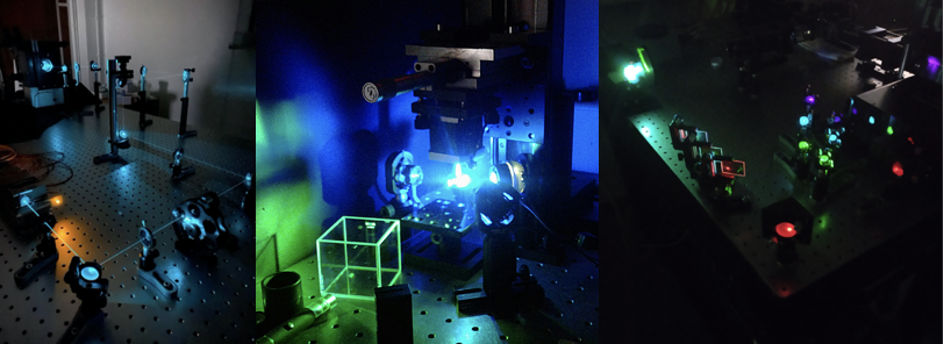PORTUGAL
Portuguese Platform of BioImaging (PPBI)
The PPBI - Portuguese Platform of BioImaging is a multi-sited, multimodal Euro-BioImaging Node covering biological imaging. PPBI comprises several advanced microscopy core facilities, organized in 3 geographical imaging clusters. PPBI services focus on advanced microscopy and image analysis for a wide range of life science domains - from cell and developmental biology, to neurosciences, oncobiology, immunology, infection, regenerative medicine and marine biology. PPBI offers state-of-the-art light and electron microscopy systems, covering applications from nano to mesoscopy, and has a strong expertise in live cell imaging and high throughput microscopy. More importantly, Euro-BioImaging users can expect to work together with highly qualified staff, who support our facilities and linked services, to boost user research projects.
Specialties and expertise of the Node
At the Euro-BioImaging PPBI Node users can expect to find expertise and resources to reach diverse research fields and projects. Each site is established on R&D institutions with a large track record of international work in biomedical areas covering specialties such as cell biology, cancer, neurodegenerative diseases, nerve regeneration, brain diseases, microbiology, host-pathogen interaction, immune response, genetic disease, chronic diseases, drug discovery, biomaterials, systems biology, organism development, and marine biology. Moreover, users will benefit from highly qualified staff with skills and expertise in project planning, imaging and bioimage data analysis.
At the three Euro-Bioimaging PPBI Node imaging clusters (NIC at Porto and Braga; CIC at Coimbra, Aveiro and Covilhã; and SIC at Lisbon area and Faro) the EuBI users will find expertise in analysis of 2D/3D cell cultures, small model organisms and biomaterials from advanced light microscopy techniques and transmission electron microscopy.

Additionally, the PPBI NODE Node also provides access to the following flagship imaging technologies: high-throughput microscopy (HTM), correlative light and electron microscopy (CLEM), super-resolution imaging, functional imaging, and mesoscopic imaging.
HTM services have extensive infrastructure support in all stages of a screening project including access to compound libraries. EuBI users can profit also from a tight coupling between assay development and bioimage analysis.

Euro-BioImaging users looking for imaging e.g. cell division, centrioles, neuronal structures, bacteria or virus at nanoscale will find at PPBI the expertise and super-resolution microscopy systems (STED, PALM, dSTORM, and SIM-SR) to support their projects. This can be complemented at the SIC by CLEM analysis.

PPBI sites have established expertise in functional imaging (e. g. FLIM, FLIM-FRET, FCS, FCCS, FAIM, and FRAP [plus photoactivation or photoconversion] and optogenetics techniques) for applications requiring cutting-edge fluorescence microscopy techniques, including at the single-molecule level and in the development of quantitative modeling, such as analysis of cell membrane dynamics, RNA expression or development of new fluorescent probes.
Mesoscopic imaging of live or cleared samples of multiple biological models, like 3D organoids, fish (Danio) and mammalian embryos, can be observed by SPIM, OPT, SPIM-OPT and micro-CT, including multiple Zeiss Z.1 light-sheet systems, the ultra-microscope and home-built SPIM-OPT for cm-large samples.

Bioimaging applied to neuroscience research is also an area of specialty. Coimbra holds a consolidated expertise in calcium imaging in primary neuronal cultures, organoids, and organotypic neuronal slices. Moreover, there is a dedicated multiphoton laboratory fully equipped for intravital imaging in mice which is especially suited to perform neurotransmitter uncaging experiments.

Offered Technologies
| Technologies |
| Deconvolution widefield microscopy (DWM) |
| Laser scanning confocal microscopy (LSCM/CLSM) |
| Spinning disk confocal microscopy (SDCM) |
| Structured illumination microscopy (SIM)* |
| Two-photon microscopy (2P) |
| Total internal reflection fluorescence microscopy (TIRF) |
| Single Molecula localisation microscopy (SMLM) |
| Stimulated emission depletion microscopy (STED) |
| Light-sheet mesoscopic imaging (SPIM or dSLSM) |
| Optical projection tomorgraphy (OPT) |
| Raman Spectroscopy (RS) |
| Second/Third Harmonics Generation (SHG/THG) |
| High throughput microscopy/high content screening (HTM/HCS) |
| Fluorescence (cross)-correlation spectroscopy (FCS/FCCS) |
| Fluorescence Resonance Energy Transfer (FRET) |
| Fluorescence Recovery After Photobleaching (FRAP) |
| Fluorescence Lifetime Imaging Microscopy (FLIM) |
| Intravital Microscopy (IVM) |
| Microdissection ** |
| Imaging at Biosafety Level >1 |
| Photomanipulation |
| Anisotropy/Polarization Microscopy |
| Expansion Microscopy * |
| Tissue Clearing (TC)* |
| Single molecule FRET (smFRET)* |
| TEM of chemical fixed samples (TEM) |
| Immuno-gold EM on resin sections (resin-EM) |
| Pre-embedding immunolabelling (pre-embed IL) |
| Scanning Electron Microscopy (SEM) |
| Elemental analysis including EDS in TEM (STEM)* |
| micro-CT |
| micro-US |
| Atomic Force Microscopy (AFM)* |
Additional services offered by the Node
- Project planning
- Methodological set up
- Technical Assistance to run instruments
- Wet lab space
- Probes
- Cell culture facilities – Biological Safety Level 1, 2 and 3
- Animal facilities (mice, rat, zebra fish)
- Other model organisms (Yeast, C. elegans, Drosophila, Bacteria, Fungi, Plants, Chick embryos, Spider mites, Anopheles)
- Workstations
- Data storage
- Data analysis facilities
- Meeting/training rooms
Instrument highlights
Among the instruments and techniques available at the PPBI Node, we highlight:
- The coherent-hybrid STED technique
- The inducible fluorescent speckle technique
- A system for laser microsurgery, to ablate intra-cellular structures at the sub-micron level
- A dual-mode mesoscope allows acquisition of correlative SPIM and OPT datasets
- A multiphoton system, fully equipment for intravital imaging in mice, equipped with two pulsed infrared lasers
- A custom-built confocal microscope with single-molecule detection for both FCS and single-molecule FRET
- Transmission Electron Microscope with elemental analysis in biological samples by energy-dispersive X-ray spectroscopy (STEM-EDS)

Contact details
Gaby Martins, PPBI manager
gaby@igc.gulbenkian.pt
Node page:
https://www.ppbi.pt